¶ Making Space for All
Baltimore is America’s original maker city. From America’s first railroad to the world’s largest steel mill, we’ve built everything from locomotives to Liberty ships. But manufacturing has changed, and the factories that once fueled our city are gone .
Open Works was founded in 2016 by the Robert W. Deutsch Foundation and the Baltimore Arts Realty Corporation (BARCO) to rebuild Baltimore’s manufacturing economy from the grassroots up. Now one of America’s largest nonprofit makerspaces, we are at the forefront of a national movement to develop a new type of public institution where everyday people can reclaim their power over technology.
¶ 2024
April: Open Works announces first capital commitments for Westside Open Works from the Maryland federal congressional delegation and the West North Avenue Development Authoprity (WNADA) totaling $4M.
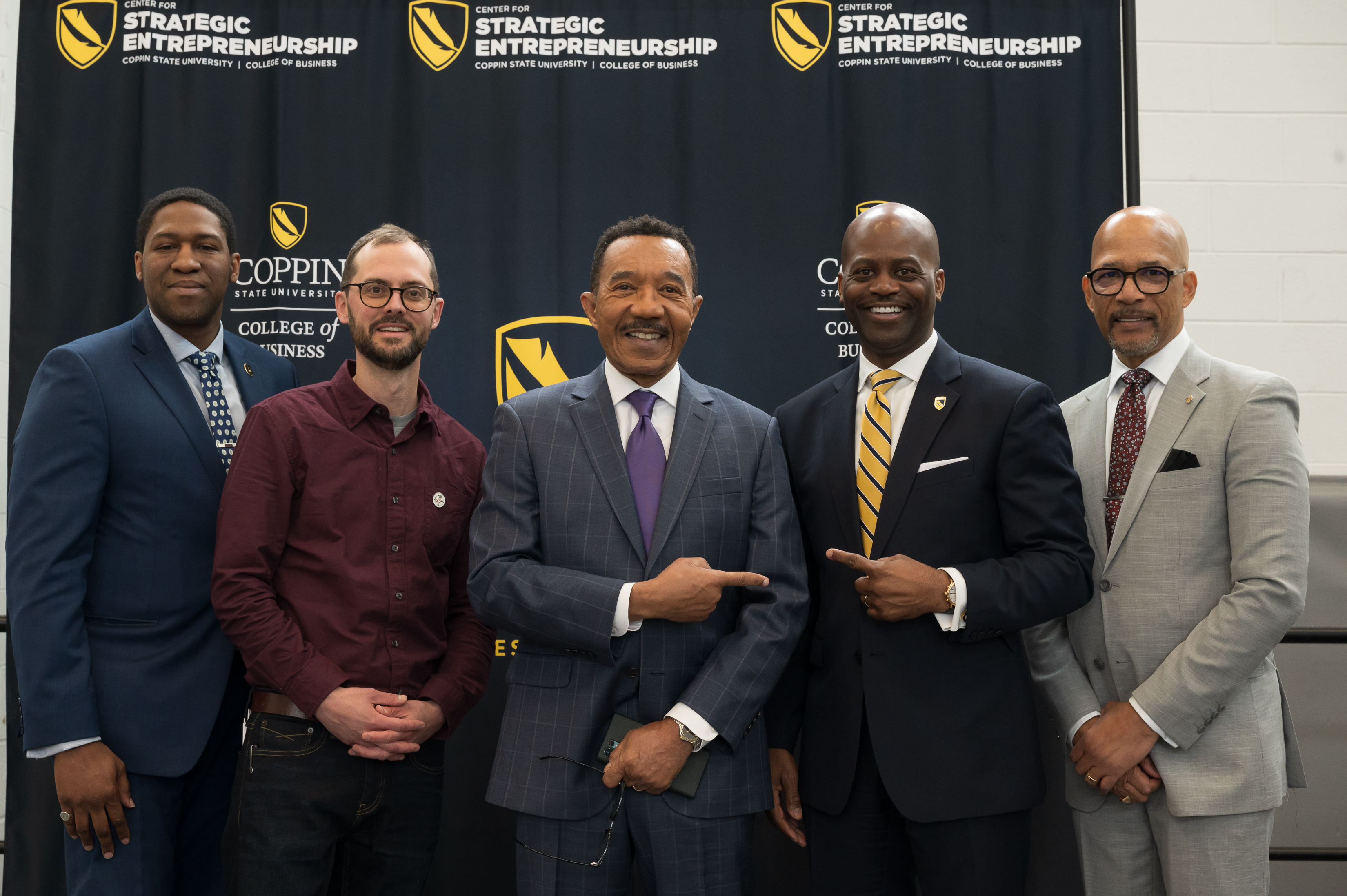
¶ 2023
July: Open Works Contract Services team installs the first of 14 "Solar Stations," public benches with solar canopies that provide free wi-fi and device charging.
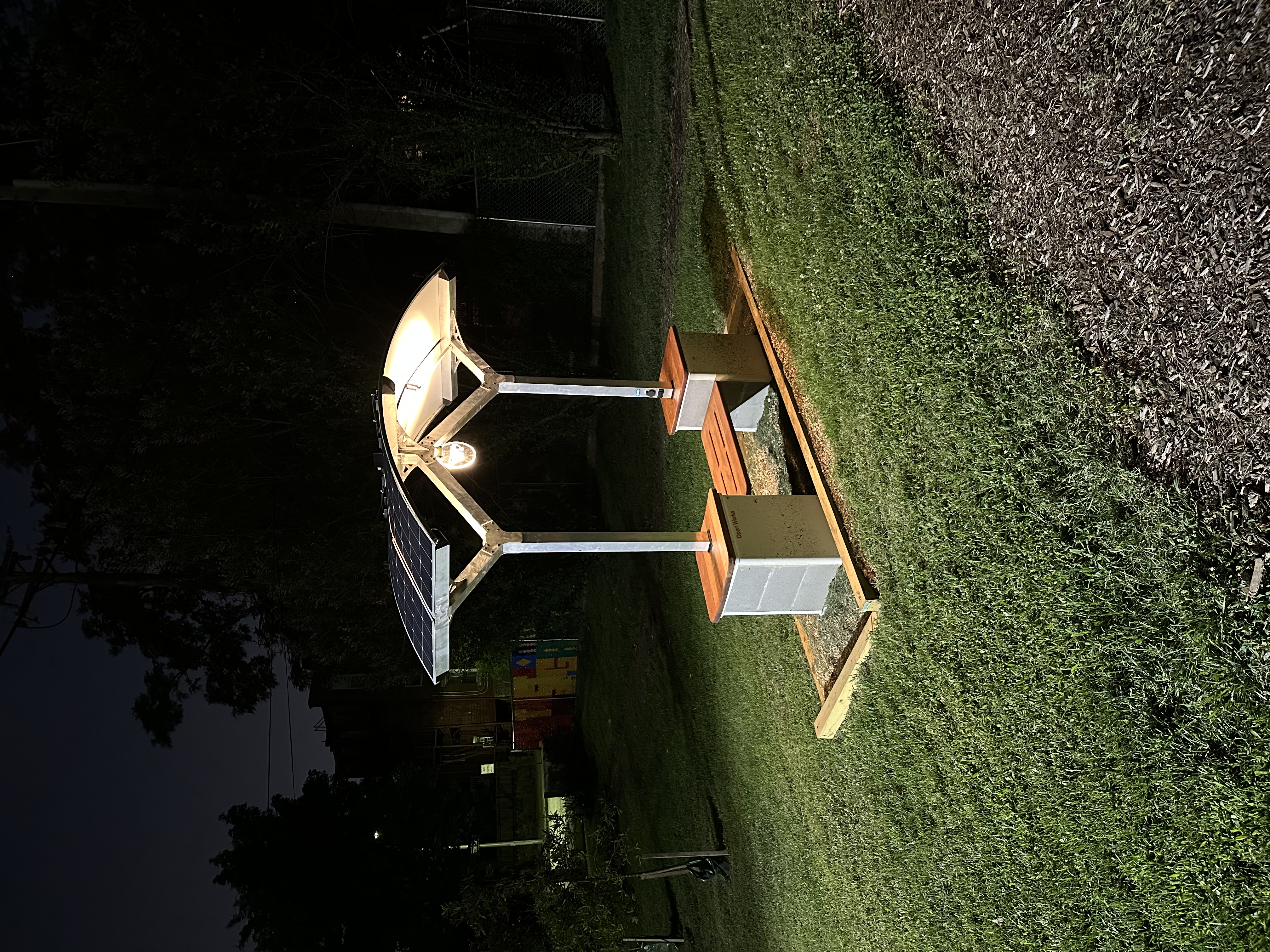
April: Open Works announces the start of a capital campaign to build a second location at Walbrook Mill adjacent to the campus of Coppin State University at the CSU Economic Inclusion Conference.
¶ 2022
April: Open Works enrolls its first cohort of trainees for the Baltimore Sewn Trades Training Program (BSTTP), a 12-week, 240-hour workforce development program for industrial sewing machine operators.
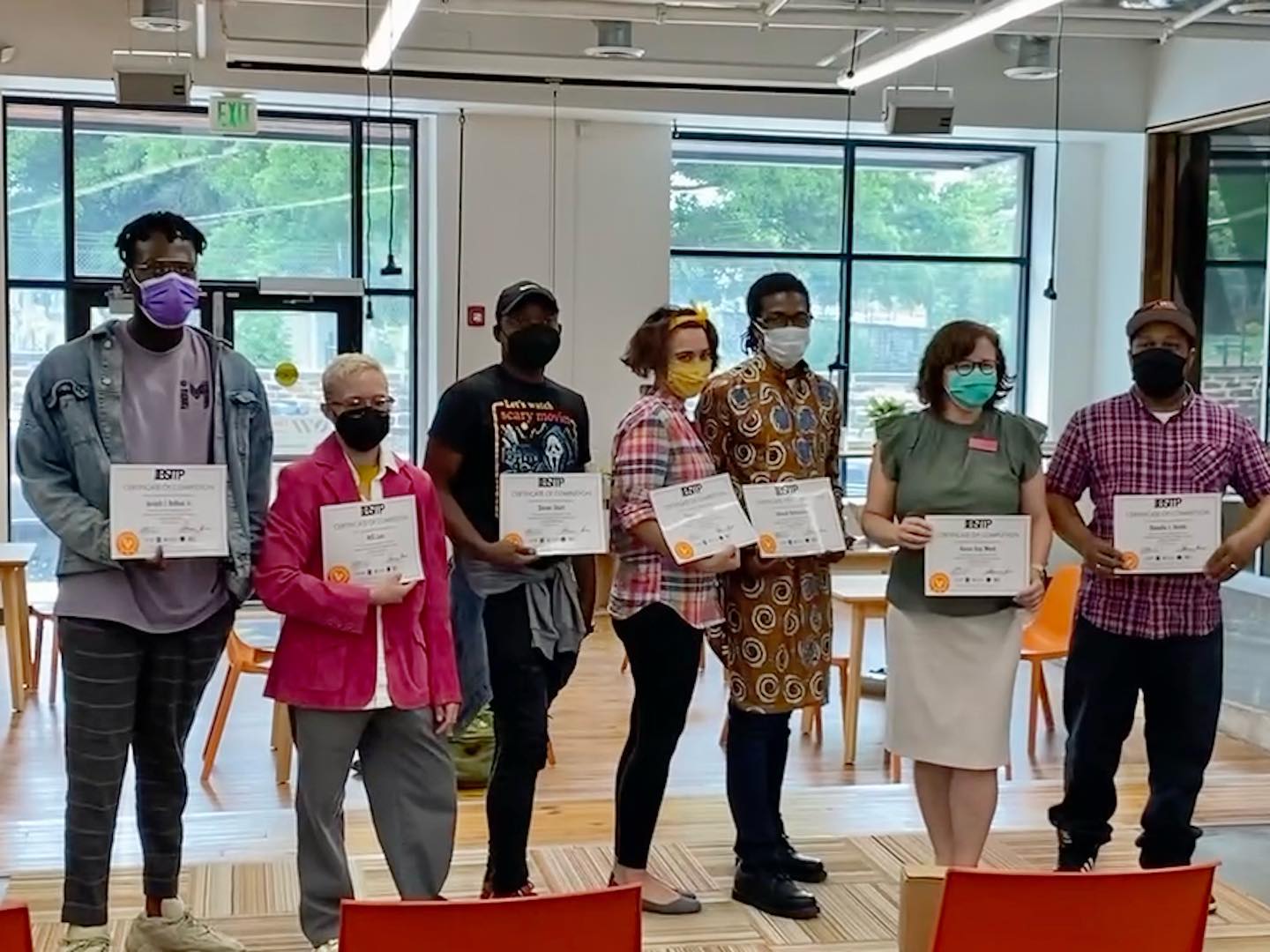
Open Works also enrolls its first cohort of trainees of the Makers Unite CNC/CAD training program.
March: SB453, the Maryland Makerspace Initiative Program, passes nearly unanimously in the Maryland General Assembly. It is the first legislatively-appropriated direct funding for makerspaces in the history of the United States. Open Works helped draft and advocate for the bill based on Dr. Williams' demonstration of economic impact.
¶ 2021
March: Open Works launches its second Makers Unite project, building flat-pack plywood desks for Baltimore City school students struggling with remote learning.
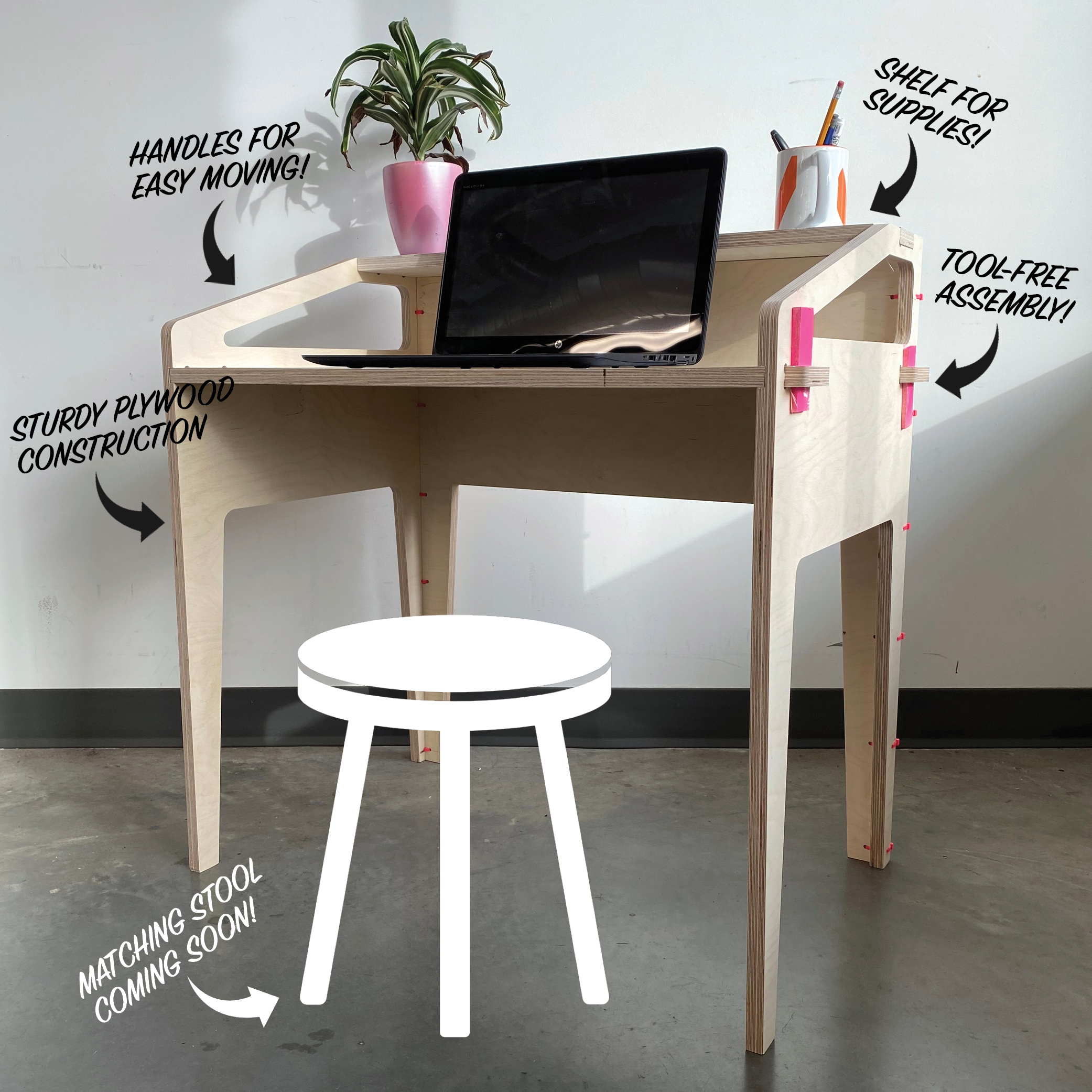
¶ 2020
Sept.: The Maryland Center for History and Culture and the Baltimore Museum of Industry acquire copies of Makers Unite face shields for their permanent collections.
July: Open Works reopens to the public on a day pass-only basis. We launch our first video classes on Teachable.com and YouTube.
March: Open Works is forced to close by order of the Governor's office to help arrest the spread of Covid-19. In response, OW launched Makers Unite, an emergency effort to manufacture face shields using 3D printing and laser cutting.
¶ 2019
June: Open Works team members April Lewis and Will Holman attend NomCon 2 in Chattanooga, TN. OW Board member Dr. Ron Williams joins as well. OW is instrumental in designing and launching the Make the Data makerspace census project.
April: Dr. Ron Williams published "Turning Makerspaces into Greater Places, the first economic impact study of a makerspace in the literature.
¶ 2018
June: Open Works team members April Lewis, Laura Cohen, and Nacho Montiel attend the very first Nation of Makers conference in New Mexico. Open Works organizes a print day to provide parts for a large collaborative sculpture of Rosie the Riveter organized by We the Builders.
¶ 2017
Nov.: Open Works hosts the first EnterpRISE Venture Competition, a business competition for manufacturing startups. EnterpRISE has since supported 80 startups with over $120,000 in direct funding as well as mentorship, classes,a nd free membership.
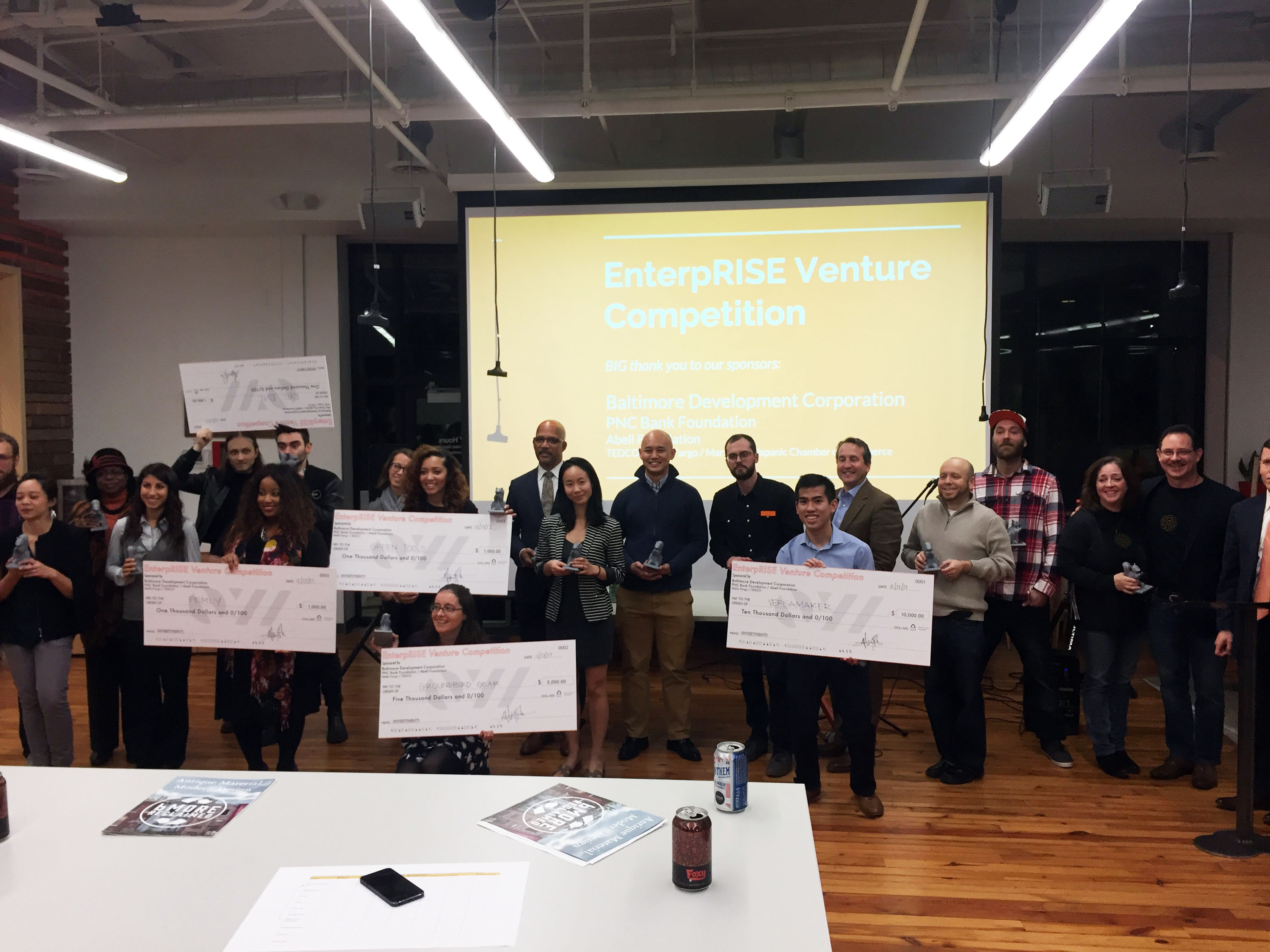
April: Open Works hosts the first Baltimore Drone Grand Prix, organized by Global Air Media.
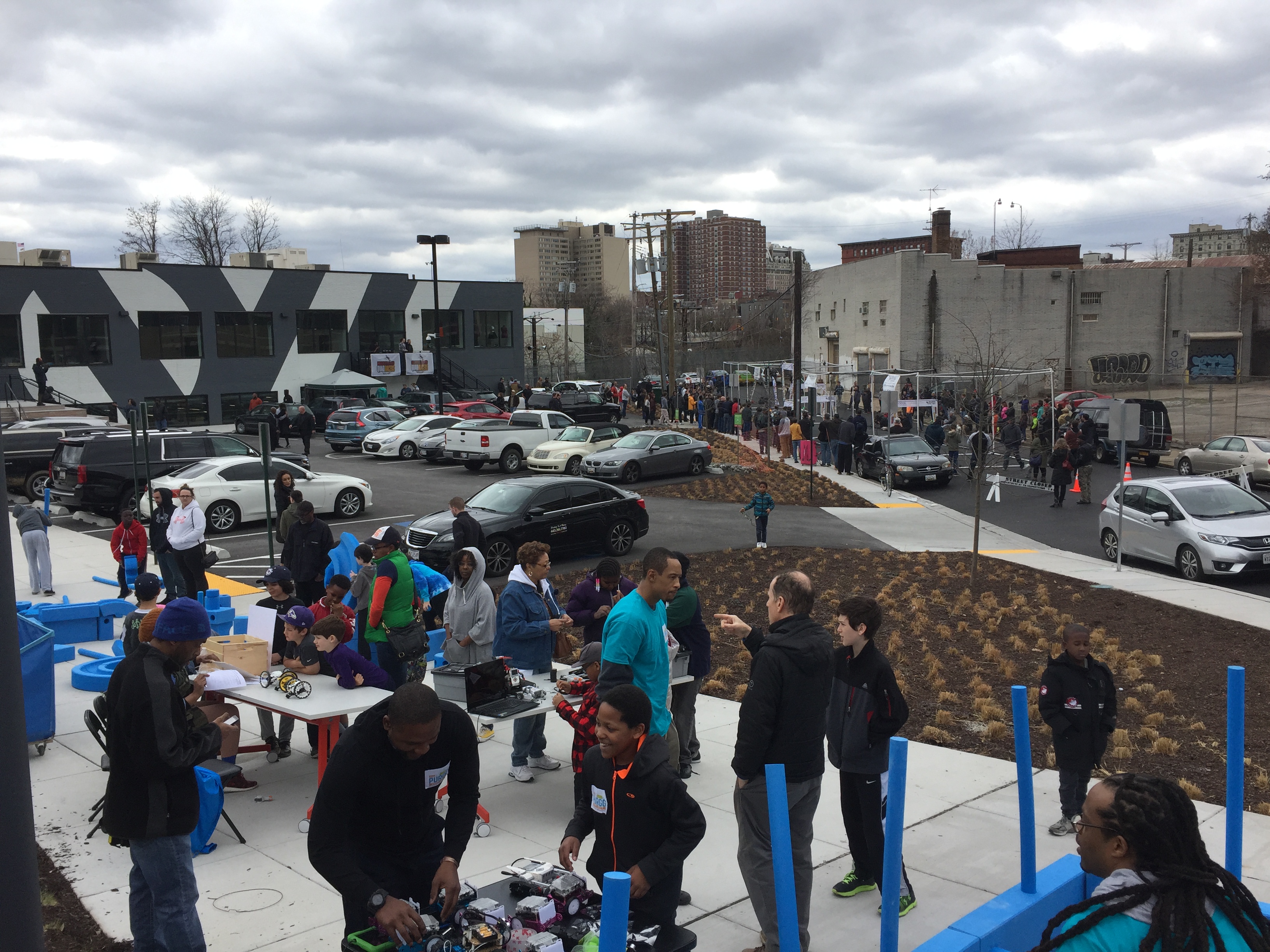
¶ 2016
Sept. 26: Open Works welcomes over 2,000 attendees to its grand opening event featuring TT the Artist, over 30 vendors, tours, and PowerWheels racing.
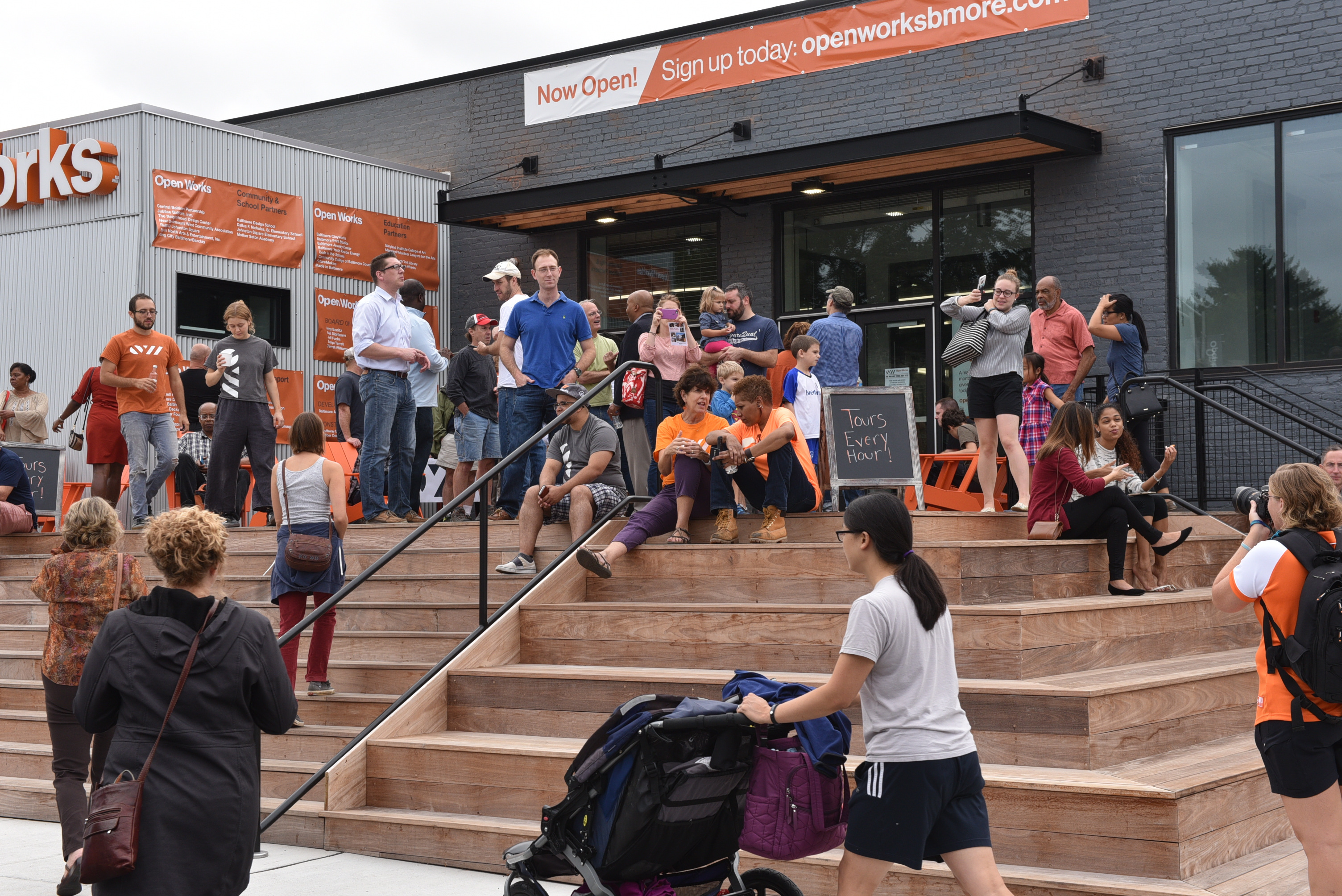
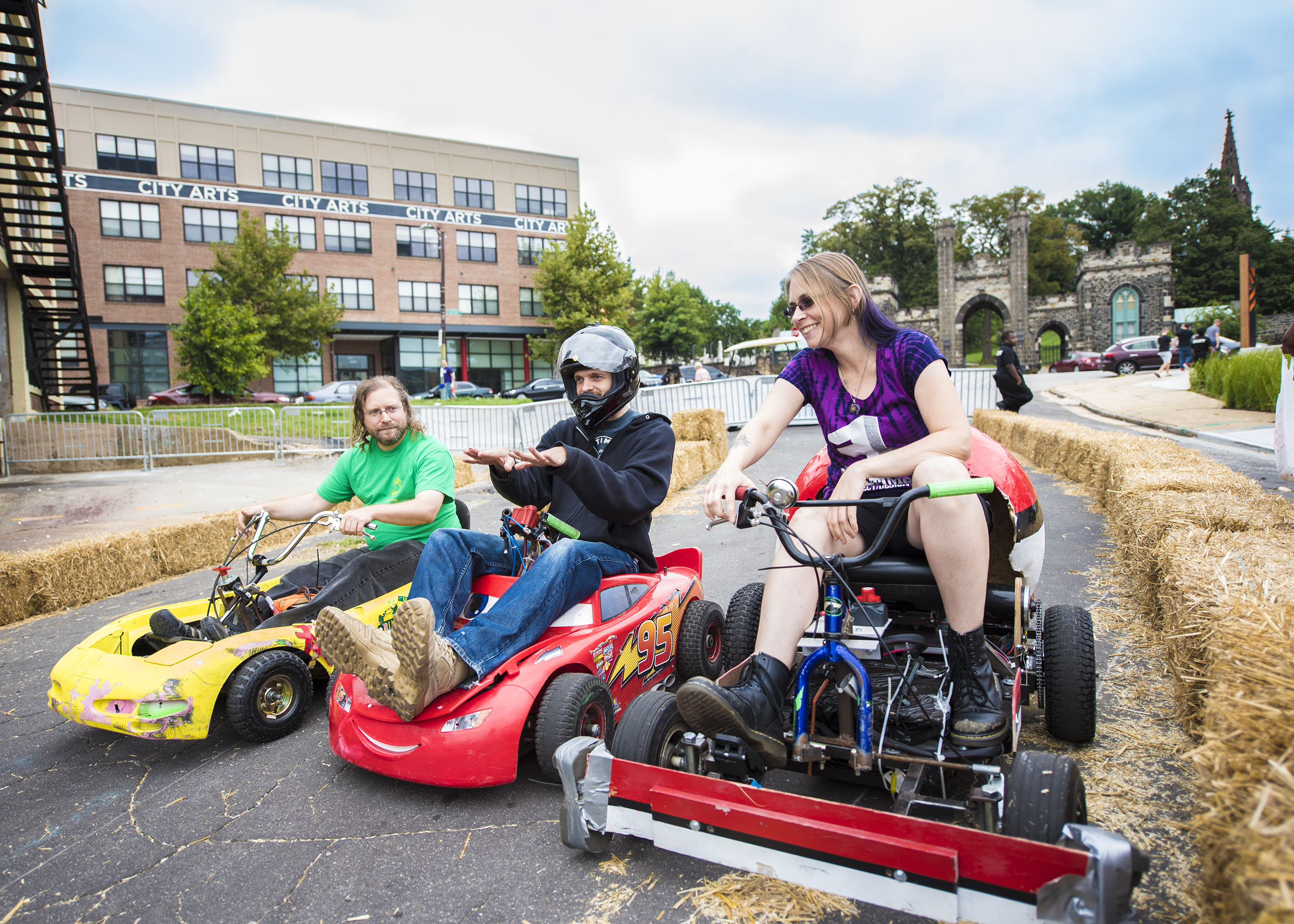
Sept. 20: Mayor Stephanie Rawlings-Blake and Congressman Elijah Cummings cut the ribbon -- with 3D-printed scissors of course!
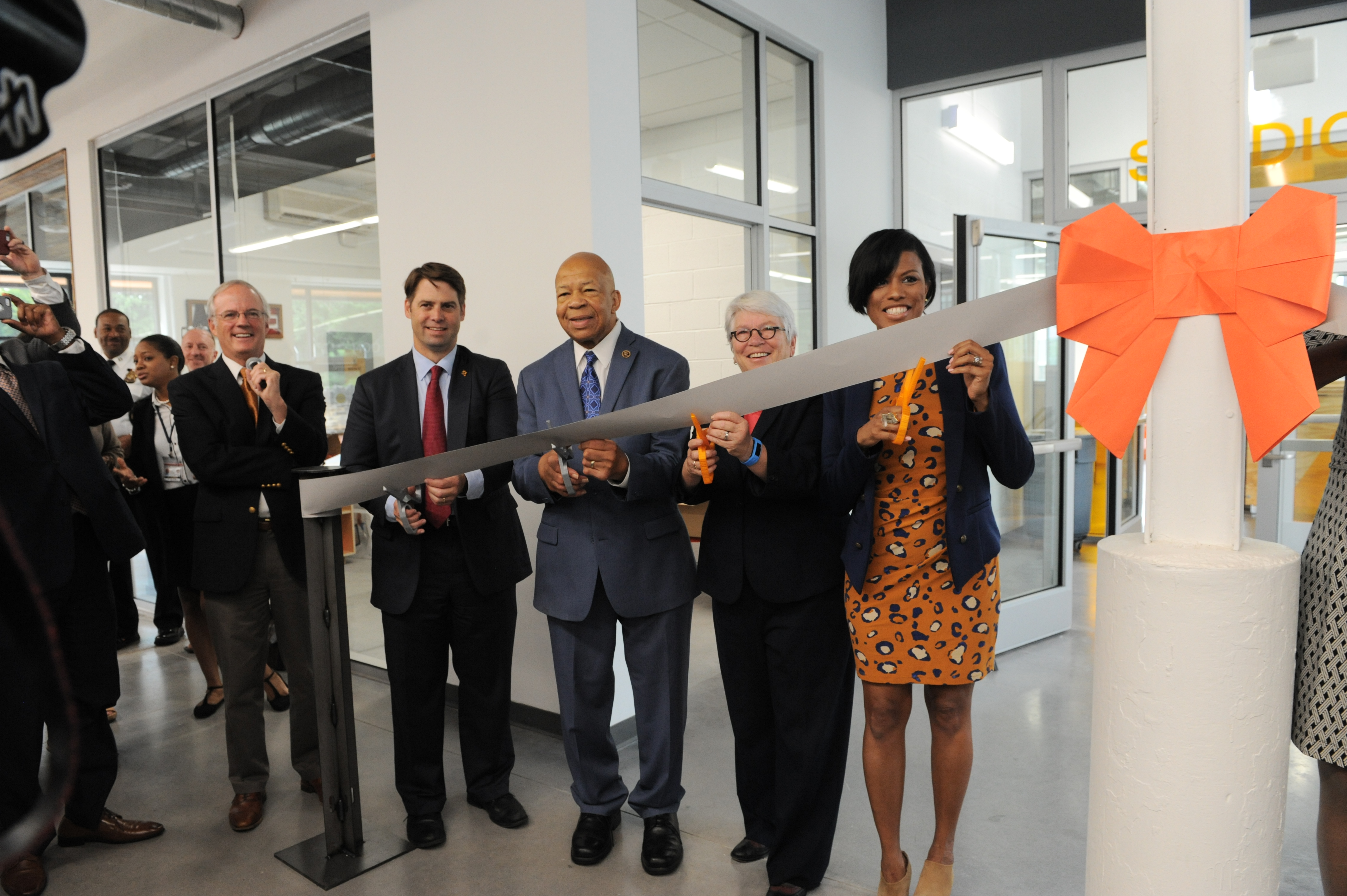
August: Open Works debuts Open Works Mobile at Artscape 2016.
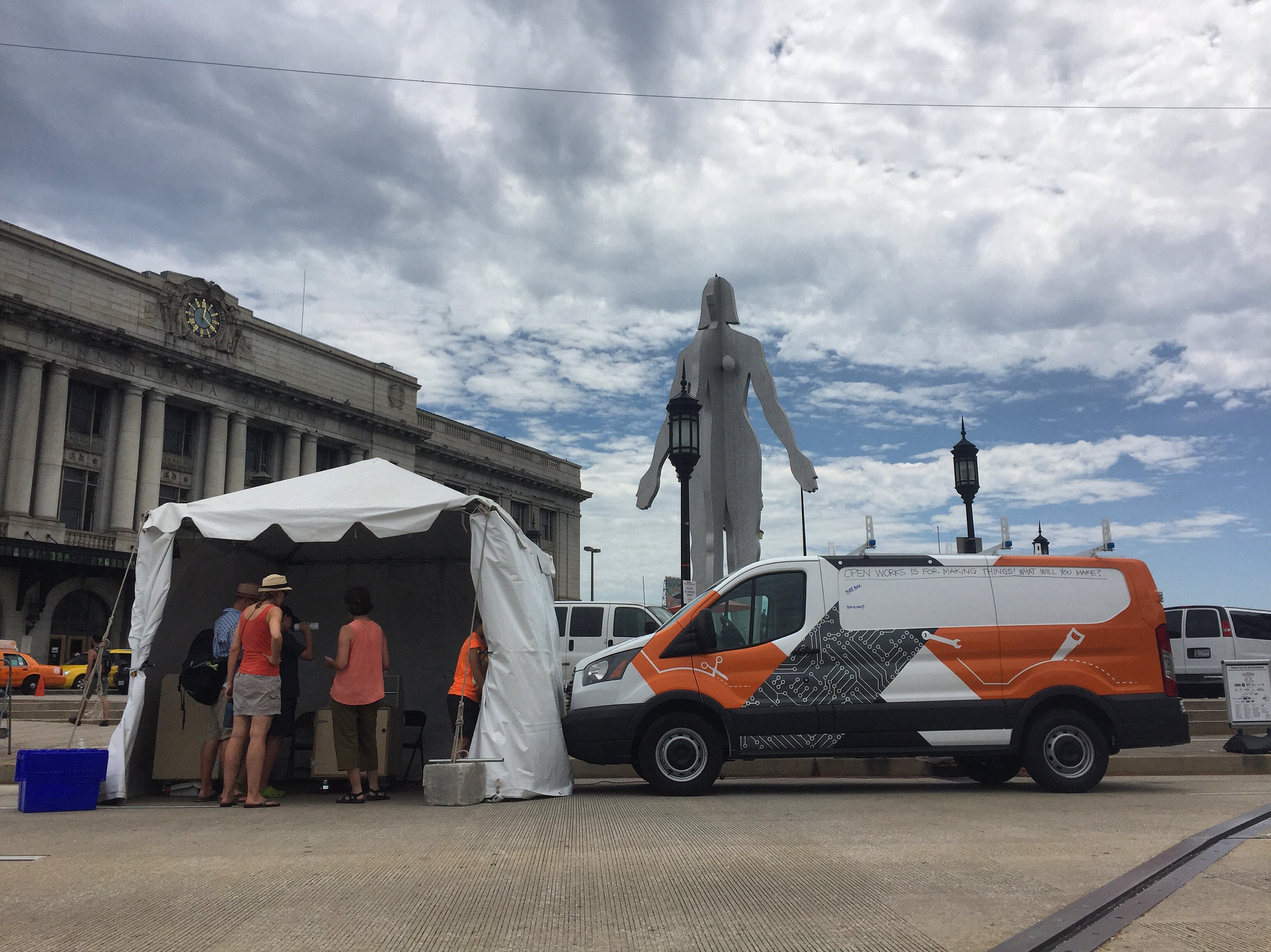
Open Works Executive Director presents on the project at the first national meetup of makerspaces organized by the White House Office of Science and Technology Policy.
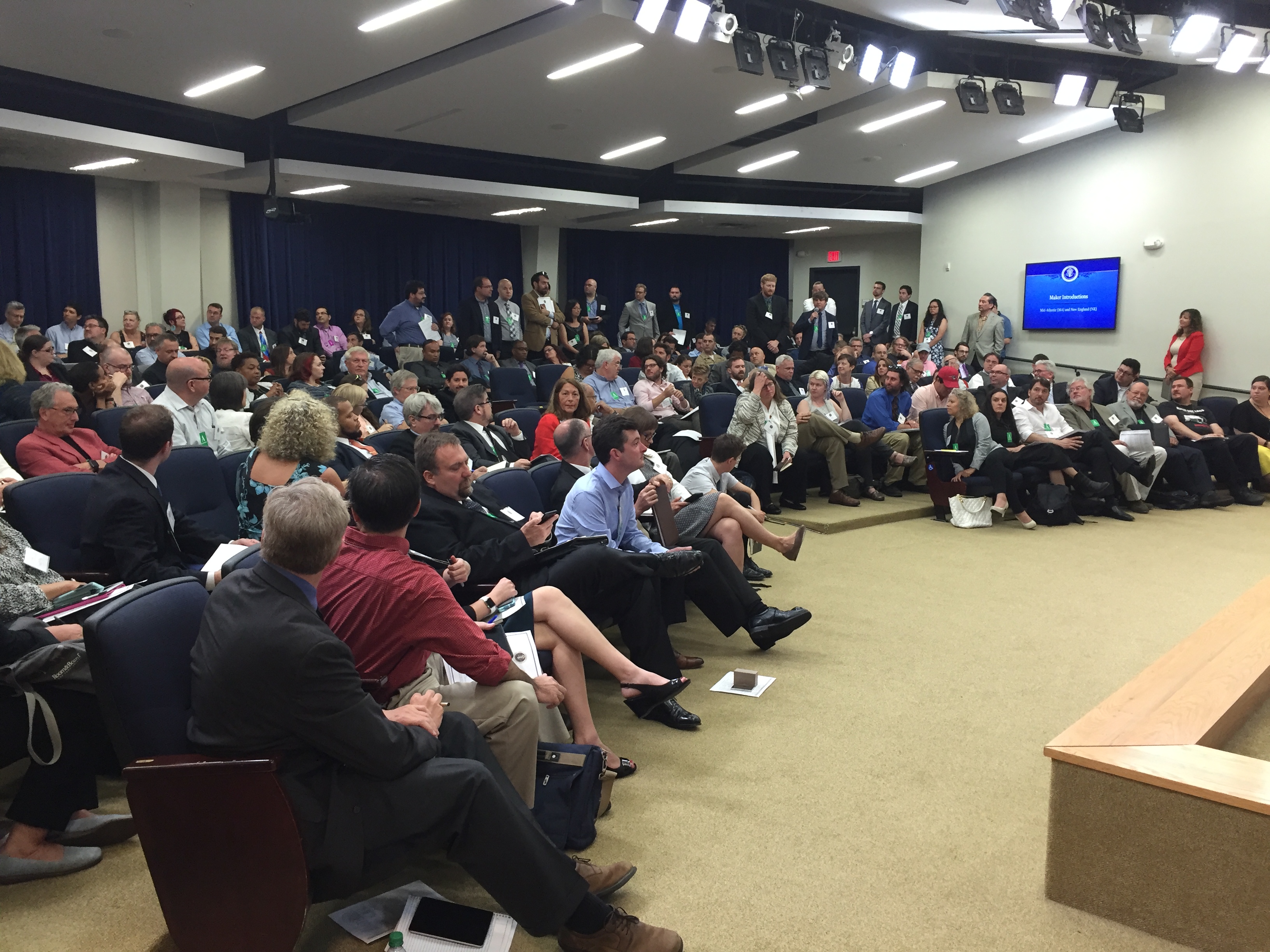
¶ Pre-History
2003-2015
2015:
Construction starts on Oct. 1st. Southway Builders is the general contractor and Cho Benn Holback and Associates is the architect.
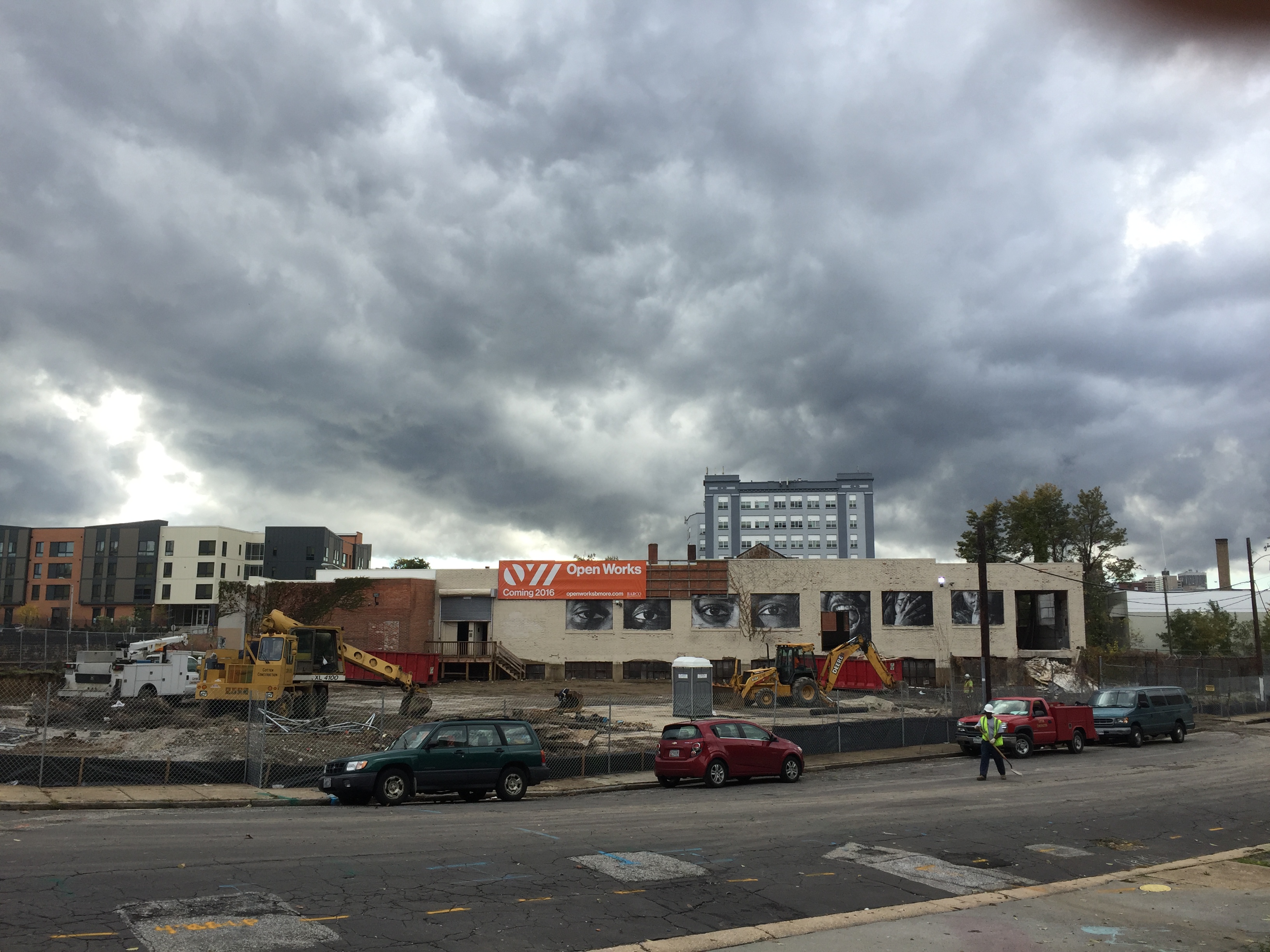
Before construction starts, Morgan State professor Chris Metzger and students install “Inside Outside: Black Lives Matter” on facade. https://www.insideoutproject.net/en/explore/group-action/black-lives-matter Project receives international attention.
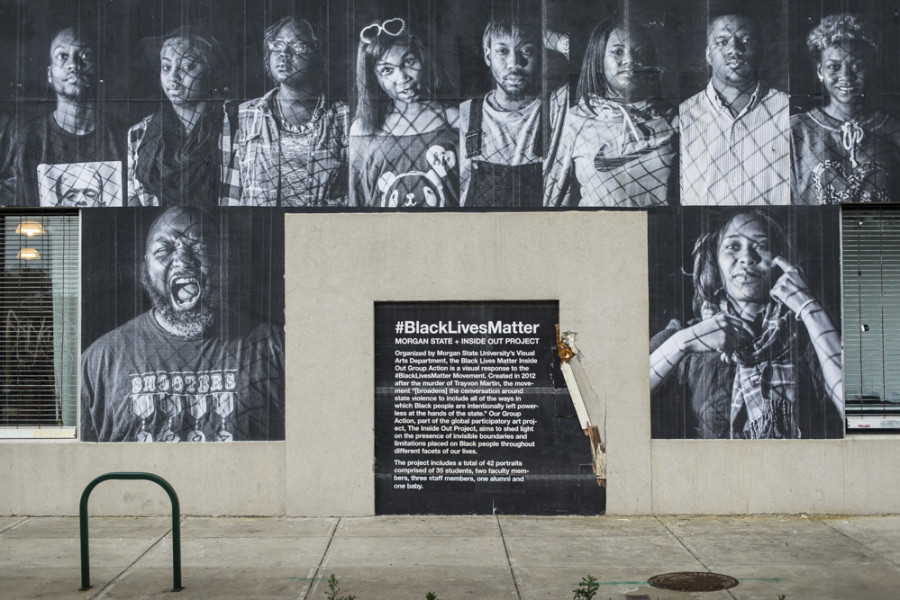
2014-15:
Force: Upsetting Rape Culture occupies the upstairs and Byron Banghart occupies the downstairs during the preconstruction period. Byron built a tiny house in the basement, and Force used the former storefront space as a quilting studio.
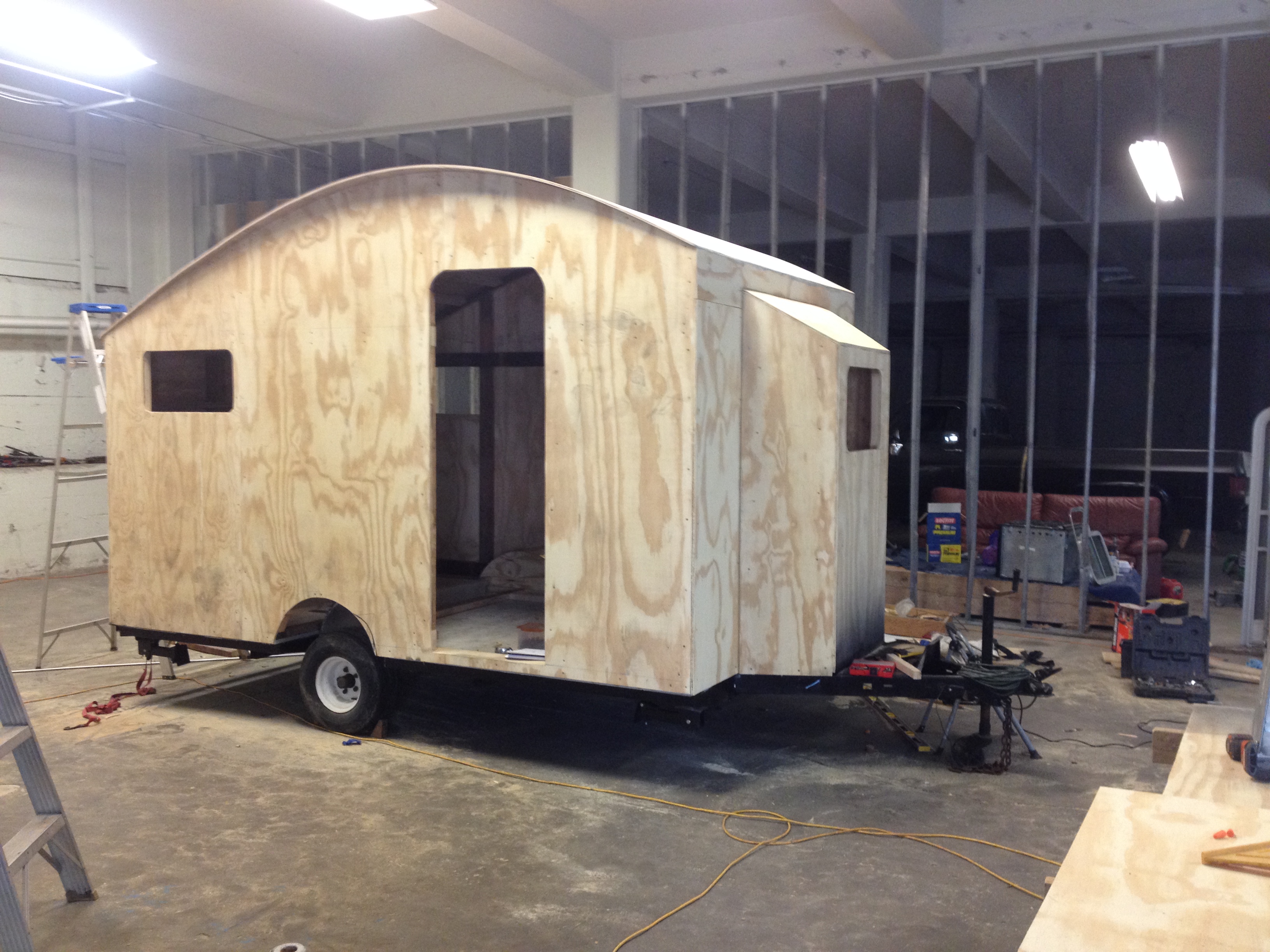
2013:
Baltimore Arts Realty Corp., a non-profit developer, purchases the building from Rock City Church in September.
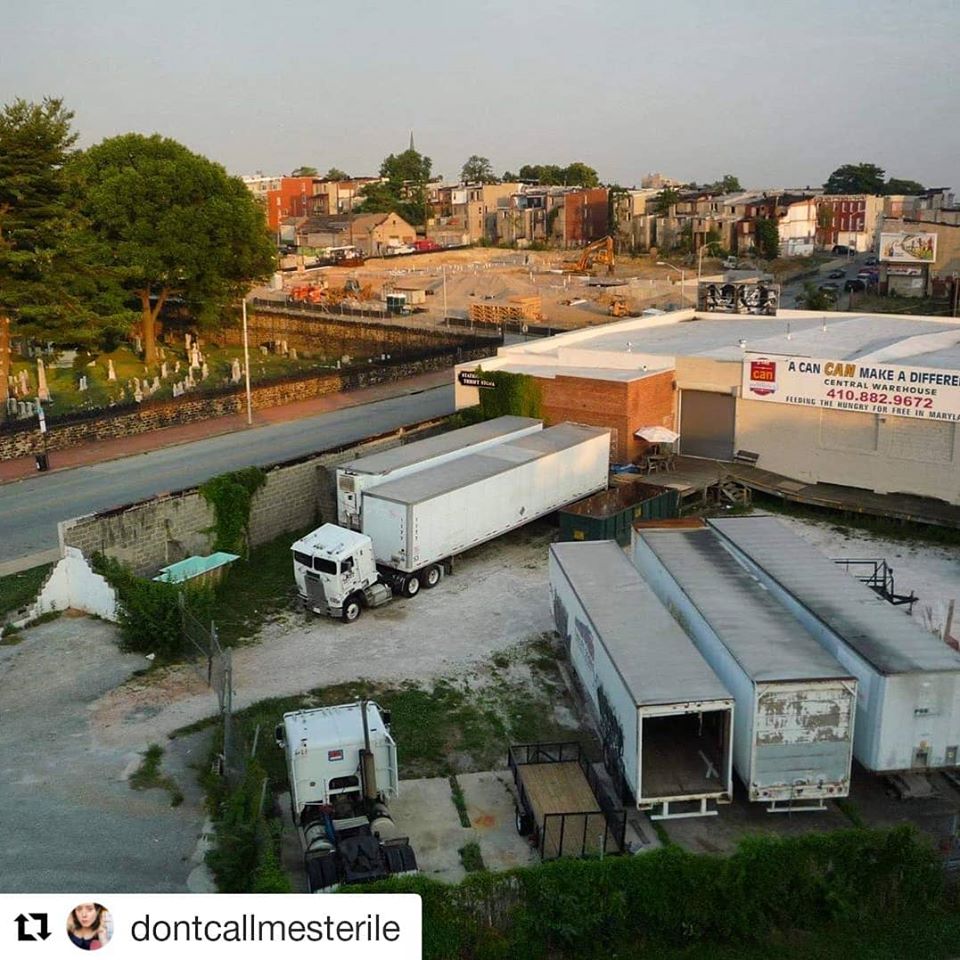
2012: Station North Thrift Store is described as “a program of Adopt-a-Block” in Baltimore Sun shopping guide.
2003: Station North Thrift Store Opens.
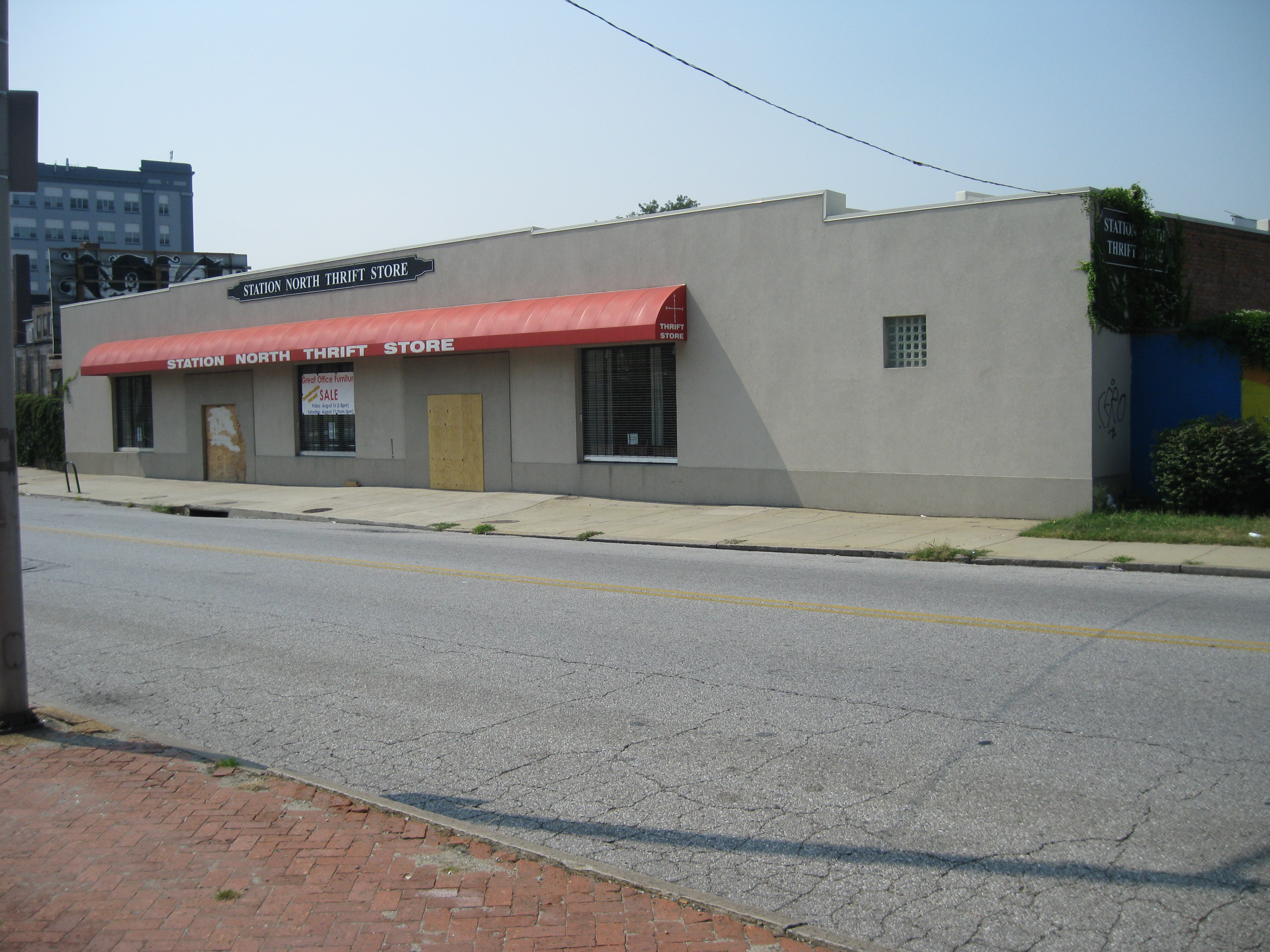
1928-2003
ca. 1990
Downstairs occupied by Lucky Ice Cream. Foundation for walk-in freezer spans width of building from present-day Digital Fabrication shop to Contract Job shop.
1987
Classifed ad for 17,000 S.F. of warehouse space (half the building) listed in the Baltimore Sun for $1,500/mo.
1984
Pride Auto Painting opens; same owner as Paint-a-Rama, rebranded after a small claims court found Paint-a-Rama liable for cheating customers.
1976-78
Building occupied by Paint-a-Rama auto body shop (downstairs and out-buildings) and an unnamed direct-mail company.
1968
Last mention of Railway Express Agency in Baltimore Sun classified ads.
1947
Wanted ad for mechanics at Railway Express starting at $1.34/hour.
ca. 1928:
Building constructed as a parking garage for the Railway Express Company by Mullan Contracting Company.
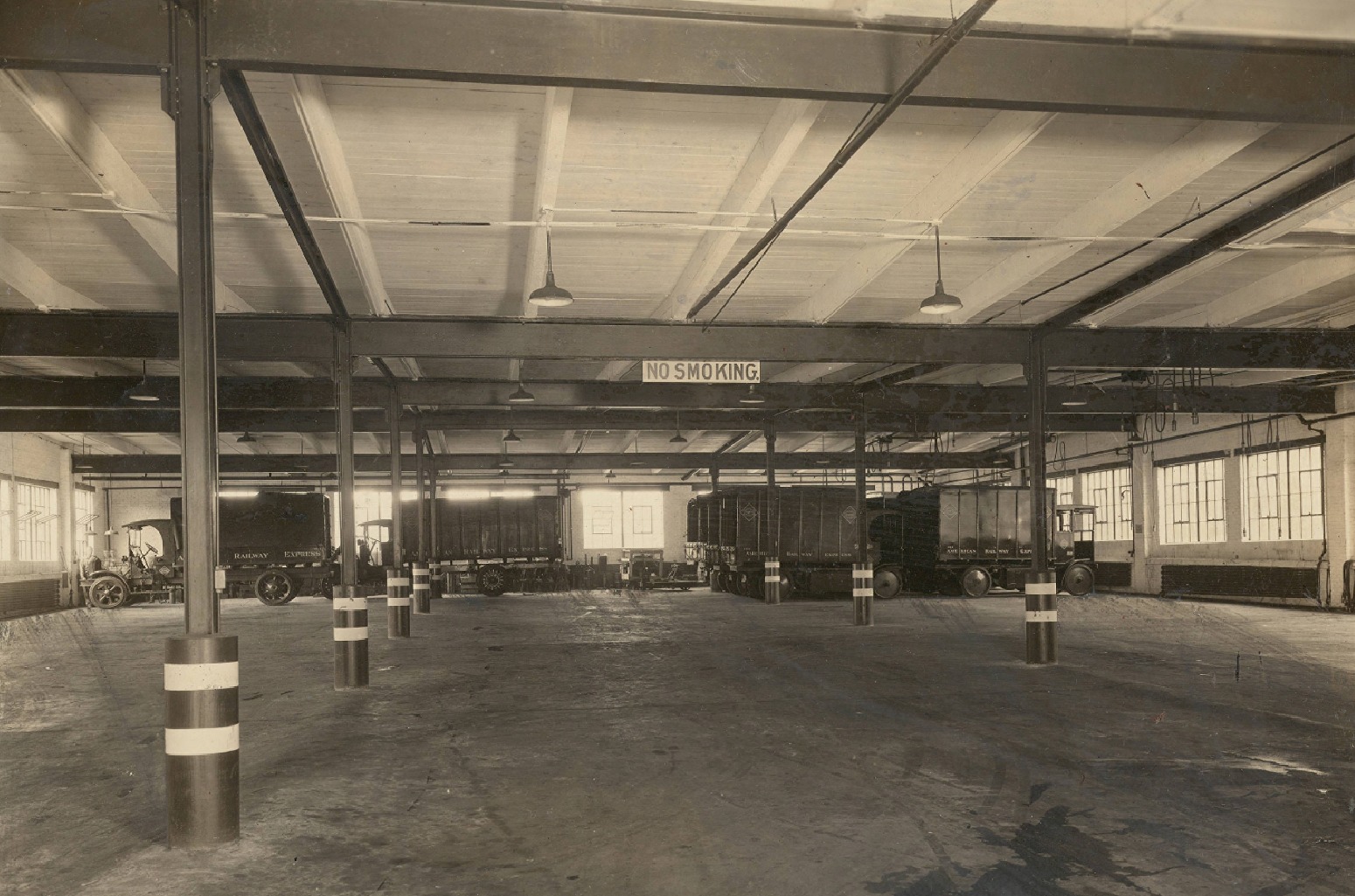
1927
Thomas Mullan purchases property from Greenmount Cemetery.
1675-1927
1926-27
Aerial survey shows similar structures as 1915 Sanborn Map.
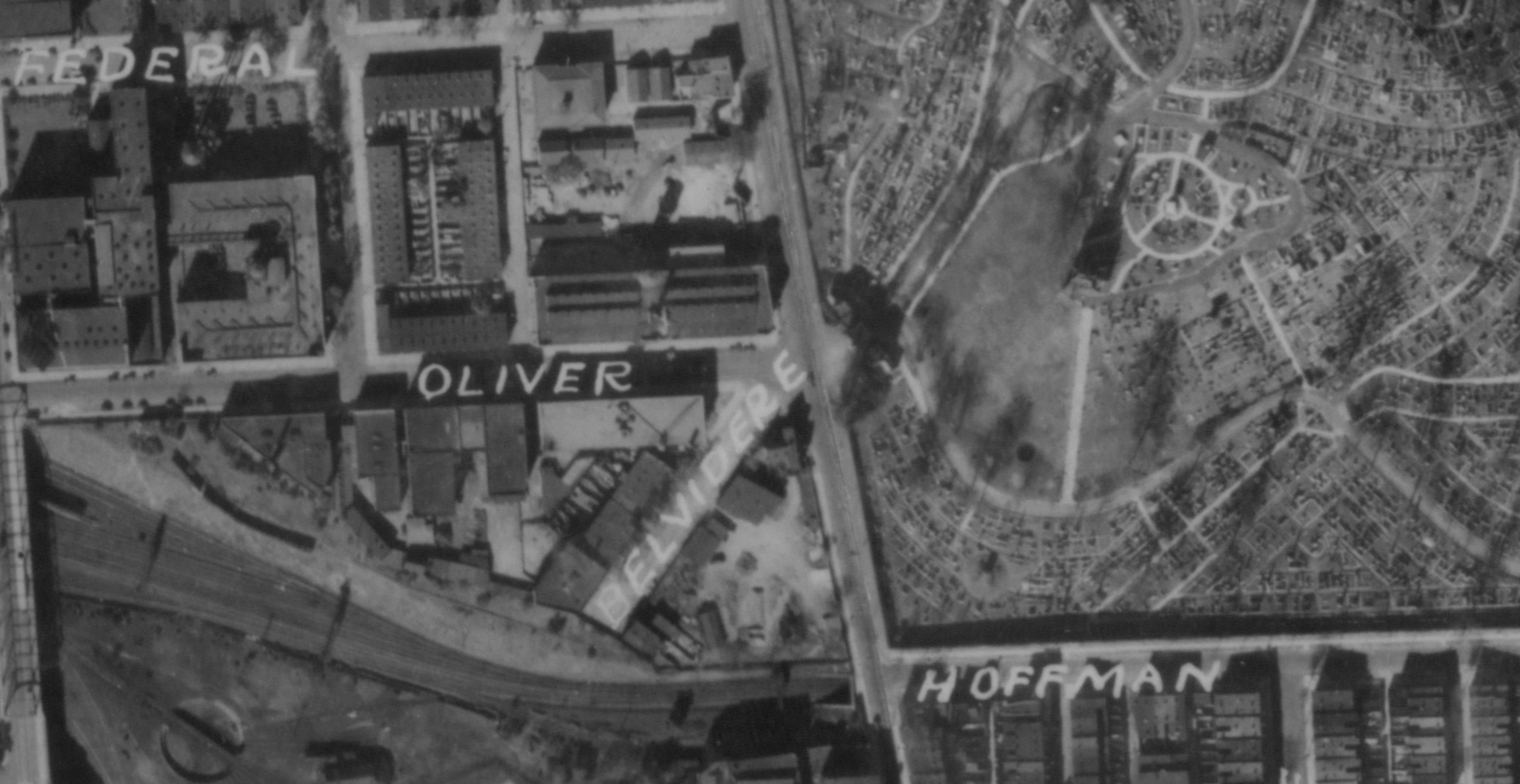
1915
Sanborn Insurance Map shows 1400 Greenmount as a largely unimproved lot with four homes, a tool house, a storage shed, and stables. The bridge over the Jones Falls has been demolished and Belvidere Street is now a dead-end.
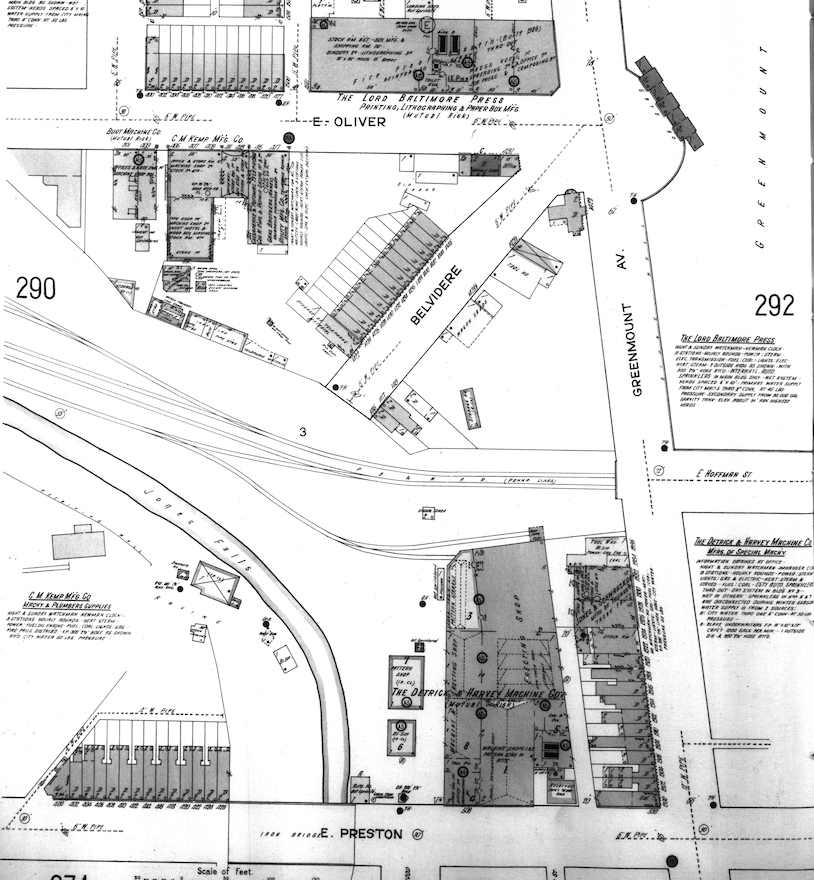
1906
Sculptor Edward Berge moves his studio to 1335 Greenmount Avenue) current site of Lillian Jones Apartments) after studying under Auguste Rodin in Paris.
1905
1400 Greenmount Avenue first appears in real estate records, sold by Harry Pennington to “proprietors of Greenmount Cemetery.
1904
Great Baltimore Fire.
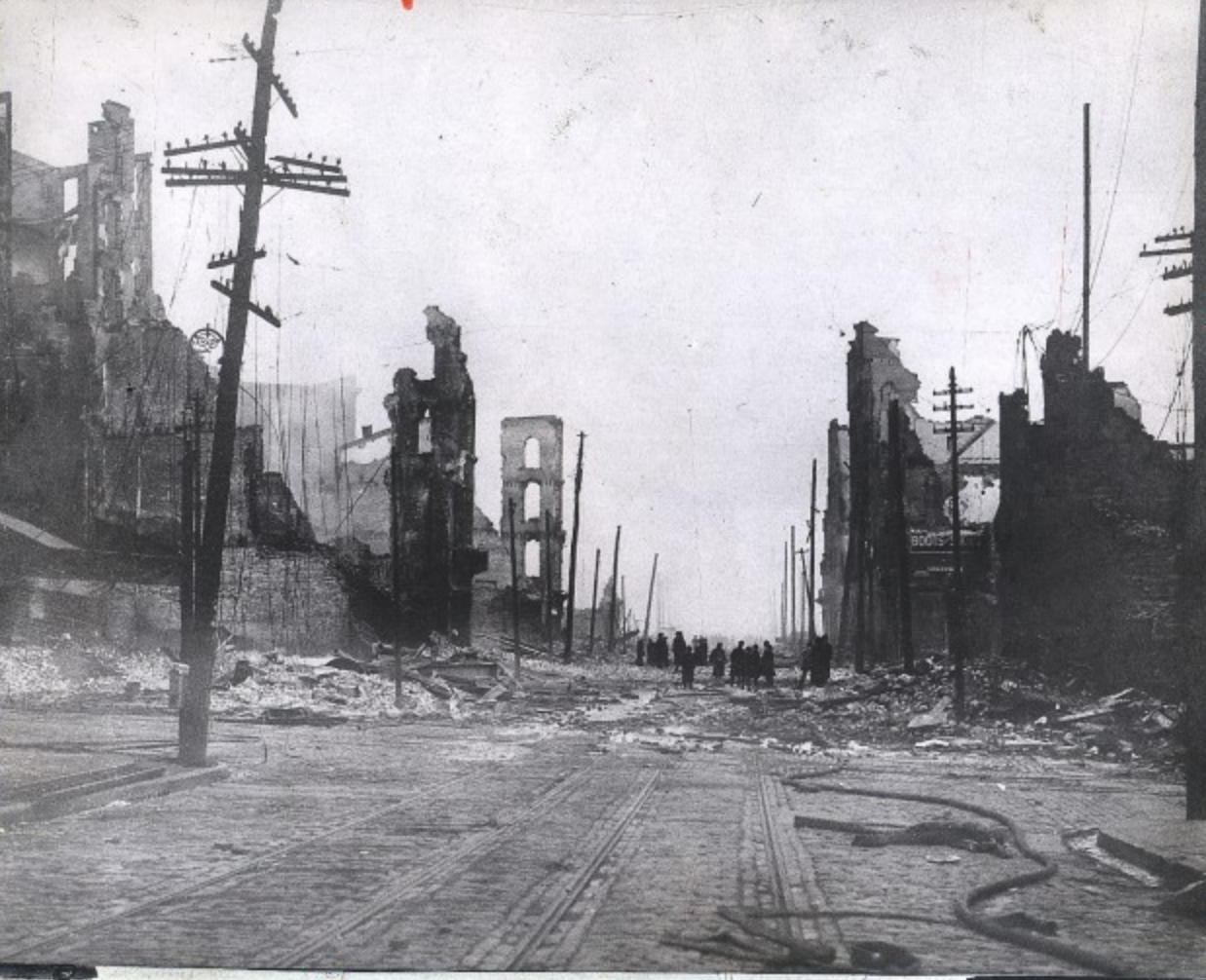
1873
Union Tunnel complete.
1871
Construction begins on the Union Tunnel (under Hoffman Street) to carry the Baltimore and Ohio railroad north to Philadelphia.
1868
Illustrated map of Baltimore by E. Sacshe Lithographers shows a covered bridge that carries Belvidere Street over the Jones Falls.
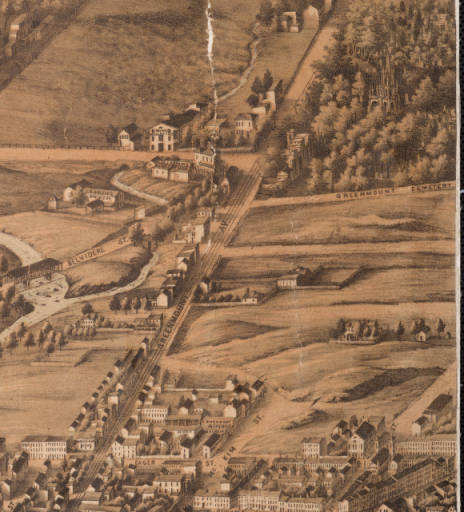
1839
Greenmount Cemetery opens.
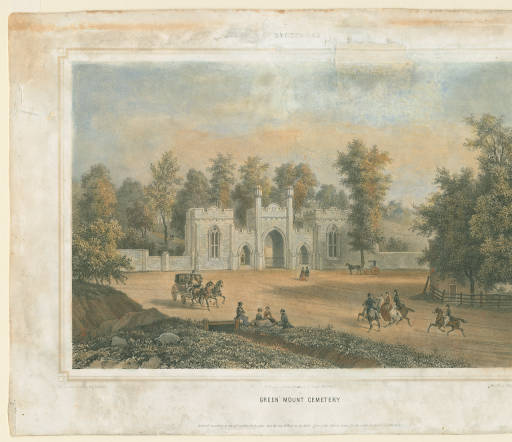
1834
Robert Oliver dies. His 60-acre estate creates Greenmount Cemetery.
1706
Port of Baltimore established.
1675
The Susquehannock village was besieged by militias from Maryland and Virgina and driven from the Piscataway area and into Pennsylvania.
1600s
The Susquehannock establish hunting grounds in the Piscataway area.